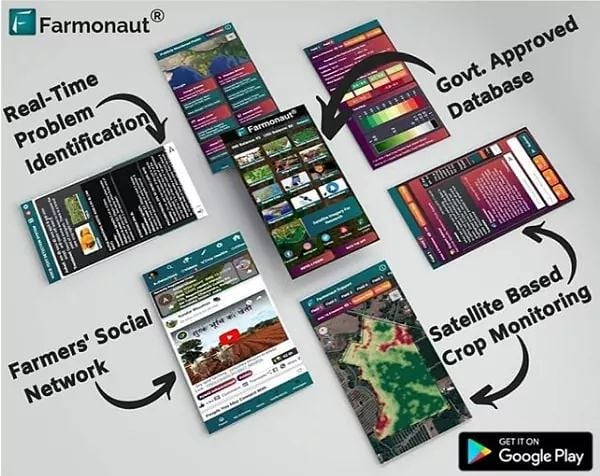Optimizing Ewe Nutrition: Boost Lamb Survival and Wool Quality with Precision Livestock Management
“Proper ewe nutrition during the third trimester can increase lamb birthweight by up to 20% and improve survival rates.”
In the world of sustainable sheep farming, optimizing ewe nutrition during pregnancy and lactation is crucial for improving lamb survival rates and overall flock health. As we delve into this comprehensive guide, we’ll explore the intricate energy requirements and management strategies essential for pregnant and lactating ewes. Our focus will be on maintaining proper condition scores throughout gestation and lactation, emphasizing the critical importance of the third trimester.
From effective pasture management to strategic supplementary feeding, we’ll uncover how to meet the increasing nutritional demands of ewes, particularly those bearing twins. By implementing precision livestock management techniques, we can optimize flock health and unlock the long-term benefits of proper nutrition on wool quality, birthweight, and overall lamb performance.
Join us as we dive deep into the world of sustainable farming systems and resource efficiency, providing valuable insights into balancing energy, protein, and fiber requirements for maximum lambing success. Let’s unlock the secrets of effective sheep nutrition and elevate your farm’s productivity to new heights.
Understanding Ewe Nutrition During Pregnancy
Ewe nutrition during pregnancy is a critical factor in determining the health and survival of lambs. As the gestation period progresses, the nutritional needs of ewes change dramatically, particularly in the final trimester when foetal growth is most rapid.
- First Trimester: During the first 100 days of pregnancy, ewes’ nutritional requirements are only slightly higher than maintenance levels. However, this is a crucial time for placental development.
- Second Trimester: Nutritional needs begin to increase as the foetus grows. Careful management of ewe condition is essential during this period.
- Third Trimester: The last 6-8 weeks of pregnancy see a significant increase in nutritional demands as the foetus grows rapidly and the ewe prepares for lactation.
To ensure optimal ewe nutrition during pregnancy, we must focus on several key nutrients:
- Energy: Adequate energy intake is crucial for maintaining ewe condition and supporting foetal growth. As pregnancy progresses, energy requirements increase substantially.
- Protein: Protein is essential for foetal development and the production of colostrum. Requirements increase significantly in late pregnancy.
- Fiber: Sufficient fiber intake is necessary for maintaining rumen function and preventing metabolic disorders.
- Vitamins and Minerals: Micronutrients play a vital role in foetal development and ewe health. Particular attention should be paid to calcium, phosphorus, and vitamin E.
By understanding and meeting these nutritional needs, we can significantly improve lamb survival rates and set the foundation for healthy, productive offspring.
The Importance of Ewe Condition Scoring
Maintaining proper condition scores throughout gestation is a key aspect of successful ewe management. Condition scoring is a hands-on method of assessing a ewe’s body fat reserves, which directly impacts her ability to support a healthy pregnancy and subsequent lactation.
- Ideal condition score at mating: 3.0-3.5 (on a 1-5 scale)
- Target condition score at lambing: 3.0-3.5
- Minimum condition score during lactation: 2.0
Regular condition scoring allows farmers to adjust feeding regimes as needed, ensuring ewes neither become overweight (which can lead to lambing difficulties) nor underweight (which can impair milk production and lamb growth).
Pasture Management for Optimal Ewe Nutrition
Effective pasture management is the cornerstone of sustainable sheep farming and plays a crucial role in meeting the nutritional needs of pregnant and lactating ewes. By implementing strategic grazing practices, we can ensure a consistent supply of high-quality forage throughout the year.
- Rotational Grazing: This technique involves dividing pastures into smaller paddocks and moving sheep regularly. It allows for better utilization of forage and promotes pasture regrowth.
- Mixed Species Pastures: Incorporating a variety of grasses and legumes can improve overall pasture quality and provide a more balanced diet for ewes.
- Seasonal Planning: Matching pasture growth cycles with ewe nutritional demands is crucial. This may involve stockpiling forage for winter grazing or planting specific crops for late pregnancy and early lactation periods.
By optimizing pasture management, we can reduce the need for supplementary feeding and improve the overall sustainability of our sheep farming operations.
Supplementary Feeding Strategies for Pregnant Ewes
While quality pasture should form the basis of ewe nutrition, supplementary feeding is often necessary to meet the increasing energy and protein requirements during late pregnancy and early lactation. Here are some key strategies for effective supplementary feeding:
- Timing is Crucial: Begin supplementary feeding 6-8 weeks before lambing to support rapid foetal growth and colostrum production.
- Energy Supplements: Grains such as barley or corn can provide concentrated energy. Introduce gradually to avoid digestive upset.
- Protein Sources: Consider high-protein feeds like soybean meal or canola meal, especially for twin-bearing ewes.
- Hay and Silage: Good quality hay or silage can help meet fiber requirements and supplement pasture when grass is scarce.
- Mineral Supplementation: Offer free-choice mineral mixes formulated for pregnant ewes to address potential deficiencies.
Remember, the key to successful supplementary feeding is to complement, not replace, the base pasture diet. Careful monitoring of ewe condition and adjustment of feed rations is essential for optimal results.
Meeting the Unique Needs of Twin-Bearing Ewes
Twin-bearing ewes require special attention when it comes to nutrition management. These ewes have significantly higher energy and protein requirements compared to those carrying single lambs. Here’s how we can address their unique needs:
- Increased Energy Intake: Twin-bearing ewes may require up to 50% more energy in late pregnancy compared to single-bearing ewes.
- Higher Protein Levels: Protein requirements are also elevated to support the growth of multiple foetuses.
- Earlier Intervention: Begin supplementary feeding earlier for twin-bearing ewes, typically around 8 weeks before expected lambing date.
- Careful Monitoring: Regular condition scoring is crucial to ensure twin-bearing ewes maintain adequate body reserves.
- Post-Lambing Support: Continue high-level nutrition into early lactation to support milk production for multiple lambs.
By recognizing and addressing the increased nutritional demands of twin-bearing ewes, we can significantly improve lamb survival rates and overall flock productivity.

The Impact of Nutrition on Wool Quality and Lamb Performance
“Maintaining optimal ewe condition scores throughout gestation can boost wool quality and yield by up to 15%.”
Proper nutrition during pregnancy and lactation not only affects lamb survival but also has long-lasting impacts on wool quality and overall lamb performance. Here’s how nutrition influences these crucial aspects:
- Wool Quality: Adequate protein and energy intake during pregnancy supports follicle development in the foetus, setting the foundation for lifetime wool production. Ewes in good condition produce fleeces with better strength, length, and yield.
- Birthweight: Well-nourished ewes give birth to heavier lambs, which have a higher survival rate and better early growth performance.
- Colostrum Production: Proper nutrition in late pregnancy ensures adequate colostrum production, crucial for lamb immunity and early growth.
- Milk Production: Ewes with good nutritional status produce more milk, supporting faster lamb growth rates.
- Long-term Performance: Lambs from well-nourished ewes often show improved growth rates, better feed conversion efficiency, and higher quality carcasses at slaughter.
By focusing on optimal ewe nutrition, we can positively influence not only the immediate survival of lambs but also their long-term productivity and the overall profitability of our sheep enterprise.
Precision Livestock Management: Leveraging Technology for Optimal Nutrition
In today’s digital age, precision livestock management techniques offer exciting opportunities to optimize ewe nutrition and overall flock health. By leveraging advanced technologies, we can make data-driven decisions that enhance productivity and sustainability.
- Electronic Identification (EID): EID tags allow for individual tracking of ewes, enabling precise monitoring of condition scores and feed intake.
- Automated Feeding Systems: These systems can dispense customized rations based on individual ewe requirements, pregnancy status, and condition score.
- Remote Monitoring: Sensors and cameras can track ewe behavior and feeding patterns, alerting farmers to potential health issues early.
- Data Analytics: Advanced software can analyze flock data to identify trends, predict nutritional needs, and optimize feeding strategies.
One such technology that can revolutionize sheep farming is Farmonaut’s satellite-based farm management solution. While not specifically designed for livestock, its capabilities in monitoring pasture health and growth can indirectly benefit sheep nutrition management.
Farmonaut’s platform uses satellite imagery to provide real-time insights into vegetation health, allowing farmers to make informed decisions about pasture management and grazing rotations. By optimizing pasture utilization, we can ensure that ewes have access to high-quality forage throughout their pregnancy and lactation periods.
Balancing Energy, Protein, and Fiber Requirements
Achieving the right balance of energy, protein, and fiber in ewe diets is crucial for optimal health and productivity. Let’s explore the specific requirements and how to meet them:
Energy Requirements
- Energy needs increase dramatically in late pregnancy and early lactation.
- Insufficient energy can lead to pregnancy toxemia and reduced milk production.
- Energy can be provided through high-quality pasture, grains, and energy-dense supplements.
Protein Requirements
- Protein is essential for foetal growth, colostrum production, and milk synthesis.
- Requirements increase by up to 50% in late pregnancy for twin-bearing ewes.
- Good protein sources include legume pastures, high-quality hay, and protein supplements like soybean meal.
Fiber Requirements
- Adequate fiber is necessary for maintaining rumen function and preventing metabolic disorders.
- Aim for a minimum of 30% neutral detergent fiber (NDF) in the total diet.
- Good-quality hay or silage can help meet fiber requirements when pasture is limited.
By carefully balancing these nutritional components, we can support optimal ewe health and maximize lambing success.
Health Management: Beyond Nutrition
While nutrition forms the foundation of ewe health, a comprehensive approach to health management is essential for maximizing lamb survival and wool quality. Here are some key areas to focus on:
- Parasite Control: Implement a strategic worming program to manage internal parasites, which can significantly impact ewe health and productivity.
- Vaccination: Develop a vaccination schedule in consultation with your veterinarian to protect against common diseases like clostridial infections and abortion-causing pathogens.
- Foot Health: Regular foot trimming and foot bathing can prevent lameness, which can negatively impact feed intake and overall health.
- Pest Management: Control external parasites like flies and lice, which can cause stress and reduce wool quality.
- Predator Control: Implement strategies to protect ewes and lambs from predators such as foxes and wild dogs, particularly during lambing season.
By addressing these health aspects alongside nutrition, we can create a holistic management approach that promotes ewe well-being and maximizes productivity.

Infrastructure and Planning for Optimal Ewe Management
Effective infrastructure and careful planning are crucial for implementing optimal ewe nutrition and management strategies. Consider the following aspects:
- Shelter: Provide adequate shelter for ewes, especially during lambing season. This can include natural windbreaks or purpose-built structures.
- Water Supply: Ensure a clean, reliable water supply is available at all times. Pregnant and lactating ewes have increased water requirements.
- Feeding Infrastructure: Invest in appropriate feeding equipment such as troughs or self-feeders to facilitate efficient supplementary feeding.
- Lambing Paddocks: Designate specific areas for lambing that offer protection from the elements and predators.
- Handling Facilities: Well-designed yards and races make condition scoring, health checks, and treatments more manageable and less stressful for ewes.
Proper infrastructure supports the implementation of nutrition and health management strategies, contributing to improved ewe welfare and productivity.
Sustainable Farming Systems and Resource Efficiency
Optimizing ewe nutrition is not just about maximizing productivity; it’s also about creating sustainable farming systems that efficiently use resources. Here are some strategies to enhance sustainability:
- Pasture Improvement: Invest in pasture renovation and management to increase carrying capacity and reduce reliance on supplementary feeds.
- Water Conservation: Implement efficient irrigation systems and water-saving strategies to ensure a reliable water supply for both pastures and livestock.
- Soil Health: Focus on maintaining and improving soil fertility through appropriate grazing management and strategic fertilizer use.
- Biodiversity: Encourage biodiversity on your farm by maintaining areas of native vegetation, which can provide shelter for livestock and support beneficial insects and wildlife.
- Energy Efficiency: Consider renewable energy sources like solar panels to power farm operations and reduce carbon footprint.
By adopting these sustainable practices, we can ensure the long-term viability of our sheep farming operations while optimizing ewe nutrition and lamb production.
Leveraging Technology for Precision Livestock Management
In the era of digital agriculture, leveraging technology can significantly enhance our ability to optimize ewe nutrition and management. While Farmonaut’s platform is primarily designed for crop monitoring, its principles of precision agriculture can be adapted to benefit livestock management:
- Pasture Monitoring: Use Farmonaut’s satellite-based vegetation health monitoring to assess pasture quality and quantity, informing grazing rotation decisions.
- Weather Forecasting: Utilize accurate weather predictions to plan feeding strategies and shelter requirements for ewes.
- Data-Driven Decision Making: Implement farm management software to track individual ewe performance, feeding regimes, and health records.
By integrating these technological solutions, we can make more informed decisions about ewe nutrition and management, leading to improved outcomes for both ewes and lambs.
Explore Farmonaut’s API for advanced agricultural data integration
Access Farmonaut’s API Developer Docs for detailed implementation guidance
Nutritional Requirements for Pregnant and Lactating Ewes
| Gestation/Lactation Stage | Energy Requirements (MJ/day) | Protein Requirements (g/day) | Fiber Requirements (% of diet) | Calcium Requirements (g/day) | Vitamin and Mineral Supplementation |
|---|---|---|---|---|---|
| Early Pregnancy (Single) | 11-13 | 100-120 | 30-35% | 3-4 | Yes |
| Late Pregnancy (Single) | 15-18 | 140-160 | 25-30% | 5-6 | Yes |
| Late Pregnancy (Twins) | 18-22 | 160-180 | 25-30% | 6-7 | Yes |
| Early Lactation (Single) | 20-25 | 180-200 | 20-25% | 7-8 | Yes |
| Early Lactation (Twins) | 25-30 | 200-220 | 20-25% | 8-9 | Yes |
This table provides a clear overview of how nutritional requirements change throughout pregnancy and lactation. It’s important to note that these are general guidelines, and individual ewe requirements may vary based on factors such as body weight, age, and environmental conditions.
Implementing Your Ewe Nutrition Strategy
Now that we’ve covered the key aspects of optimizing ewe nutrition, let’s summarize the steps to implement an effective nutrition strategy on your farm:
- Assess Your Current Situation: Evaluate your pasture quality, flock condition, and available resources.
- Set Clear Goals: Define targets for lamb survival rates, wool quality, and overall productivity.
- Develop a Feeding Plan: Create a comprehensive feeding strategy that addresses the changing needs of ewes throughout pregnancy and lactation.
- Implement Precision Management: Utilize technology and data-driven approaches to monitor and adjust your nutrition program.
- Regular Monitoring and Adjustment: Continuously assess ewe condition and performance, making necessary adjustments to your feeding strategy.
- Integrate Health Management: Combine your nutrition strategy with a comprehensive health management plan.
- Embrace Sustainability: Implement practices that promote long-term sustainability and resource efficiency.
By following these steps and leveraging the insights provided in this guide, you can significantly improve ewe nutrition, boost lamb survival rates, and enhance wool quality on your sheep farm.
Conclusion: Elevating Sheep Farming Through Optimal Ewe Nutrition
Optimizing ewe nutrition during pregnancy and lactation is a cornerstone of successful and sustainable sheep farming. By understanding the changing nutritional needs of ewes, implementing precision livestock management techniques, and leveraging technology, we can significantly improve lamb survival rates, enhance wool quality, and boost overall farm productivity.
Remember, the key to success lies in a holistic approach that combines nutrition, health management, and sustainable farming practices. By continually monitoring and adjusting our strategies, we can ensure that our ewes receive the optimal nutrition they need to produce healthy, thriving lambs and high-quality wool.
As we look to the future of sheep farming, embracing innovative technologies and sustainable practices will be crucial. While platforms like Farmonaut focus on crop monitoring, their principles of precision agriculture can inspire similar approaches in livestock management, helping us make more informed decisions and optimize resource use.
By implementing the strategies outlined in this guide, you’re not just improving your farm’s productivity – you’re contributing to a more sustainable and efficient sheep farming industry. Here’s to healthier ewes, stronger lambs, and a prosperous future in sheep farming!
FAQ: Optimizing Ewe Nutrition for Improved Lamb Survival and Wool Quality
Q1: How does ewe nutrition affect lamb birthweight?
A1: Proper ewe nutrition, especially during the last trimester of pregnancy, directly impacts lamb birthweight. Well-nourished ewes tend to produce heavier lambs, which have better survival rates and stronger early growth. Inadequate nutrition can lead to lower birthweights, increasing the risk of lamb mortality.
Q2: What are the key nutrients to focus on for pregnant ewes?
A2: The most critical nutrients for pregnant ewes are energy, protein, calcium, and vitamin E. Energy and protein requirements increase significantly in late pregnancy, especially for twin-bearing ewes. Calcium is crucial for skeletal development of the foetus and prevention of metabolic disorders, while vitamin E supports immune function and lamb vigor.
Q3: How often should I condition score my ewes?
A3: It’s recommended to condition score ewes at key points in the production cycle: pre-mating, mid-pregnancy, late pregnancy, and during lactation. For more precise management, scoring every 3-4 weeks during pregnancy can help you adjust feeding strategies as needed.
Q4: Can overfeeding be as problematic as underfeeding for pregnant ewes?
A4: Yes, overfeeding can be just as problematic as underfeeding. Overly fat ewes are at higher risk of pregnancy toxemia, lambing difficulties, and reduced milk production. The goal is to maintain a moderate body condition score (3.0-3.5 on a 5-point scale) throughout pregnancy and lactation.
Q5: How does ewe nutrition impact wool quality?
A5: Ewe nutrition has a significant impact on wool quality. Adequate protein and energy intake supports follicle development and wool growth. Well-nourished ewes produce fleeces with better strength, length, and yield. Nutritional stress can lead to weak points in the wool fiber, reducing its value.
Q6: What role does water play in ewe nutrition?
A6: Water is often overlooked but is crucial for proper ewe nutrition. Pregnant and lactating ewes have increased water requirements. Adequate water intake supports feed digestion, milk production, and overall health. Ensure clean, fresh water is always available, and monitor water quality regularly.
Q7: How can I use technology to optimize ewe nutrition?
A7: Technology can play a significant role in optimizing ewe nutrition. Electronic identification (EID) systems can help track individual ewe performance and feed intake. Automated feeding systems can dispense customized rations based on pregnancy status and condition score. Satellite-based pasture monitoring tools, like those offered by Farmonaut, can help assess forage quality and quantity, informing grazing management decisions.
Q8: What are the signs of nutritional deficiencies in pregnant ewes?
A8: Signs of nutritional deficiencies can include poor body condition, reduced feed intake, lethargy, pregnancy toxemia (sleepy sickness), milk fever, and poor quality wool. In severe cases, you may see increased rates of abortion or weak lambs at birth. Regular monitoring and condition scoring can help catch and address nutritional issues early.
Q9: How should I adjust ewe nutrition for multiple births?
A9: Ewes carrying multiple lambs have significantly higher nutritional requirements, especially in late pregnancy and early lactation. They may need up to 50% more energy and protein compared to single-bearing ewes. Start supplementary feeding earlier (around 8 weeks before lambing) and provide higher quality feeds. Continue high-level nutrition into early lactation to support milk production for multiple lambs.
Q10: Can pasture alone meet the nutritional needs of pregnant and lactating ewes?
A10: While high-quality pasture can meet many of the nutritional needs of ewes, it may not be sufficient during late pregnancy and early lactation, especially for twin-bearing ewes or in areas with limited pasture quality. Supplementary feeding is often necessary to meet the increased energy and protein requirements during these critical periods. Regular pasture assessment and strategic supplementation are key to optimizing ewe nutrition.




















